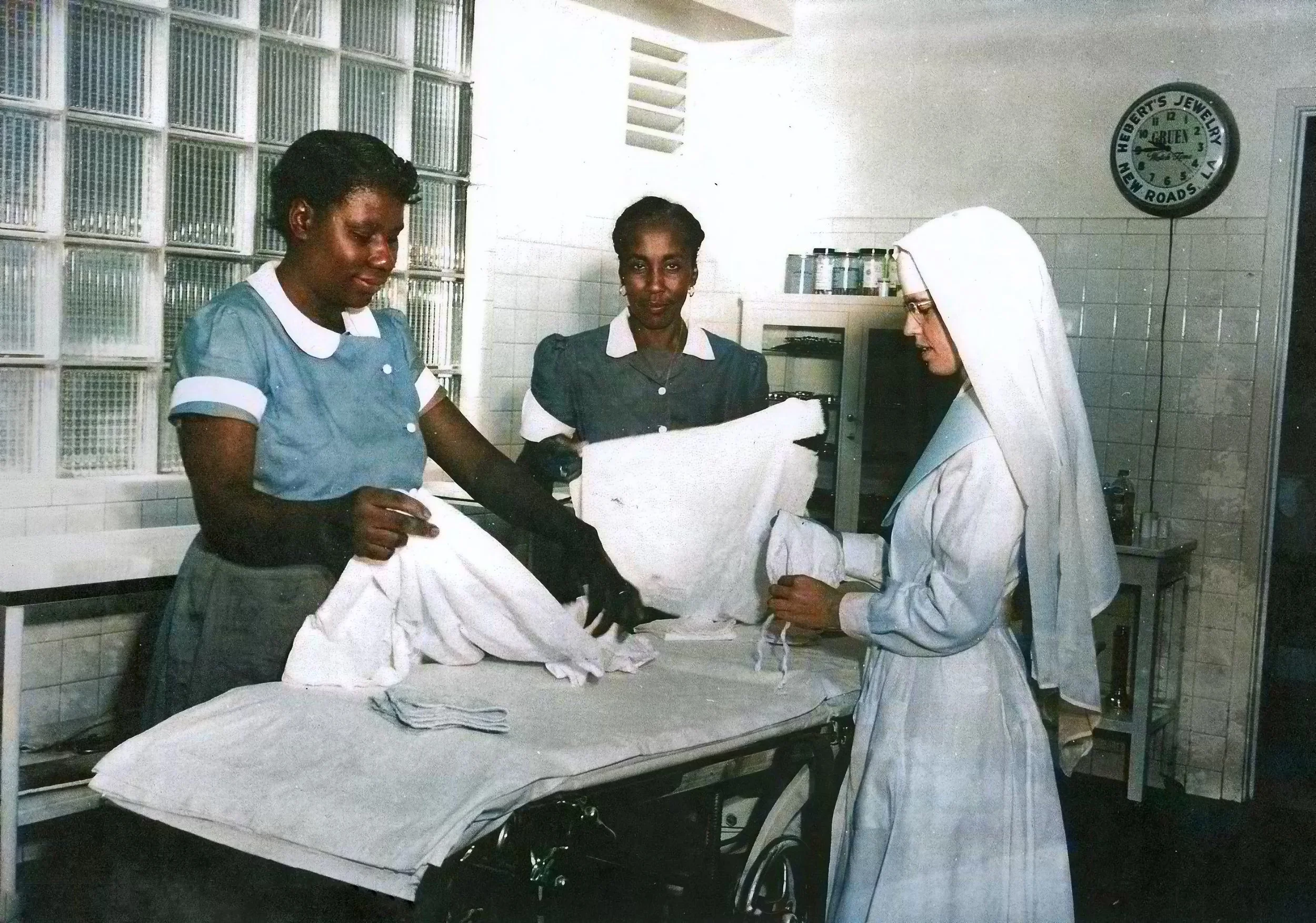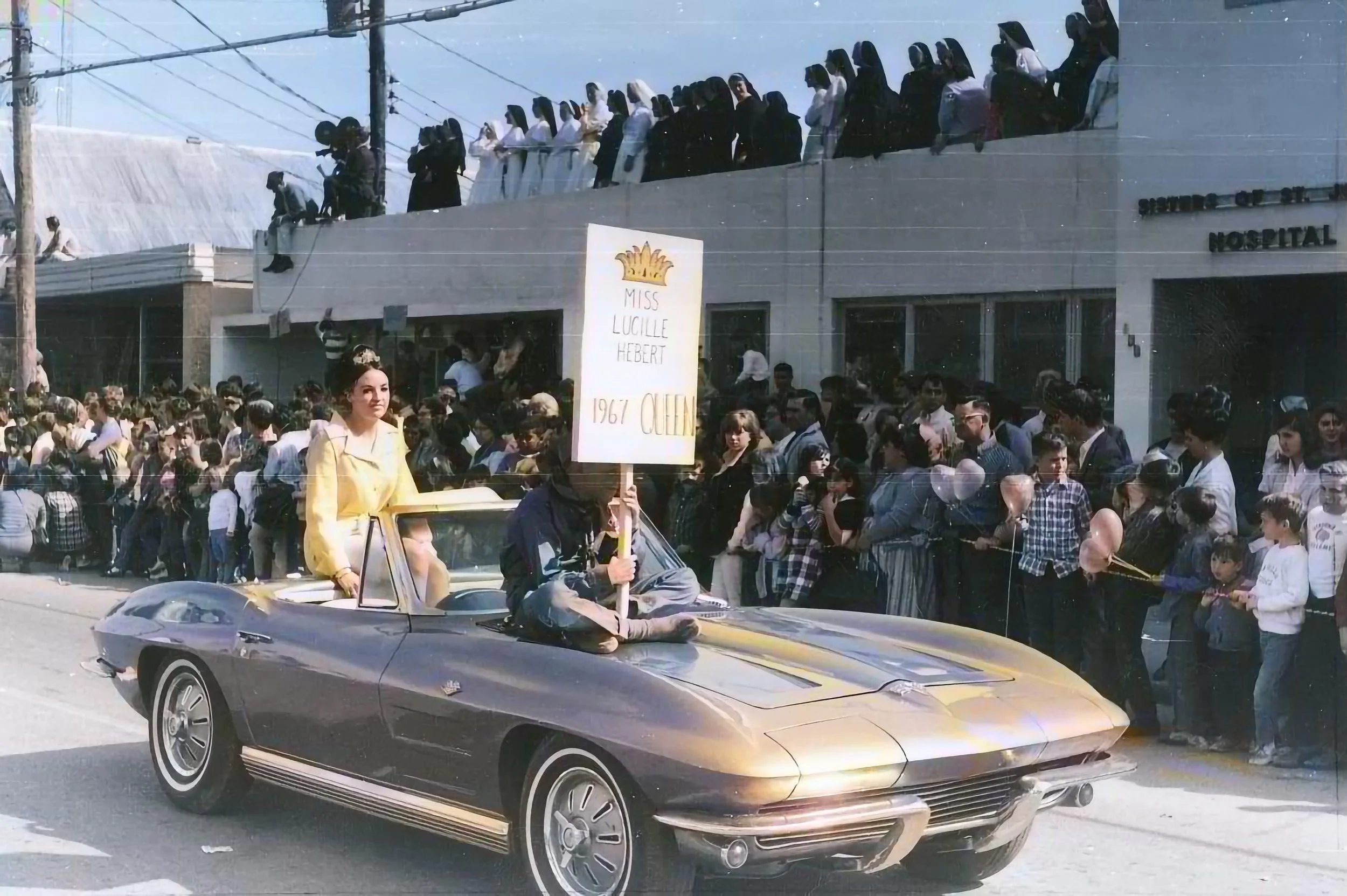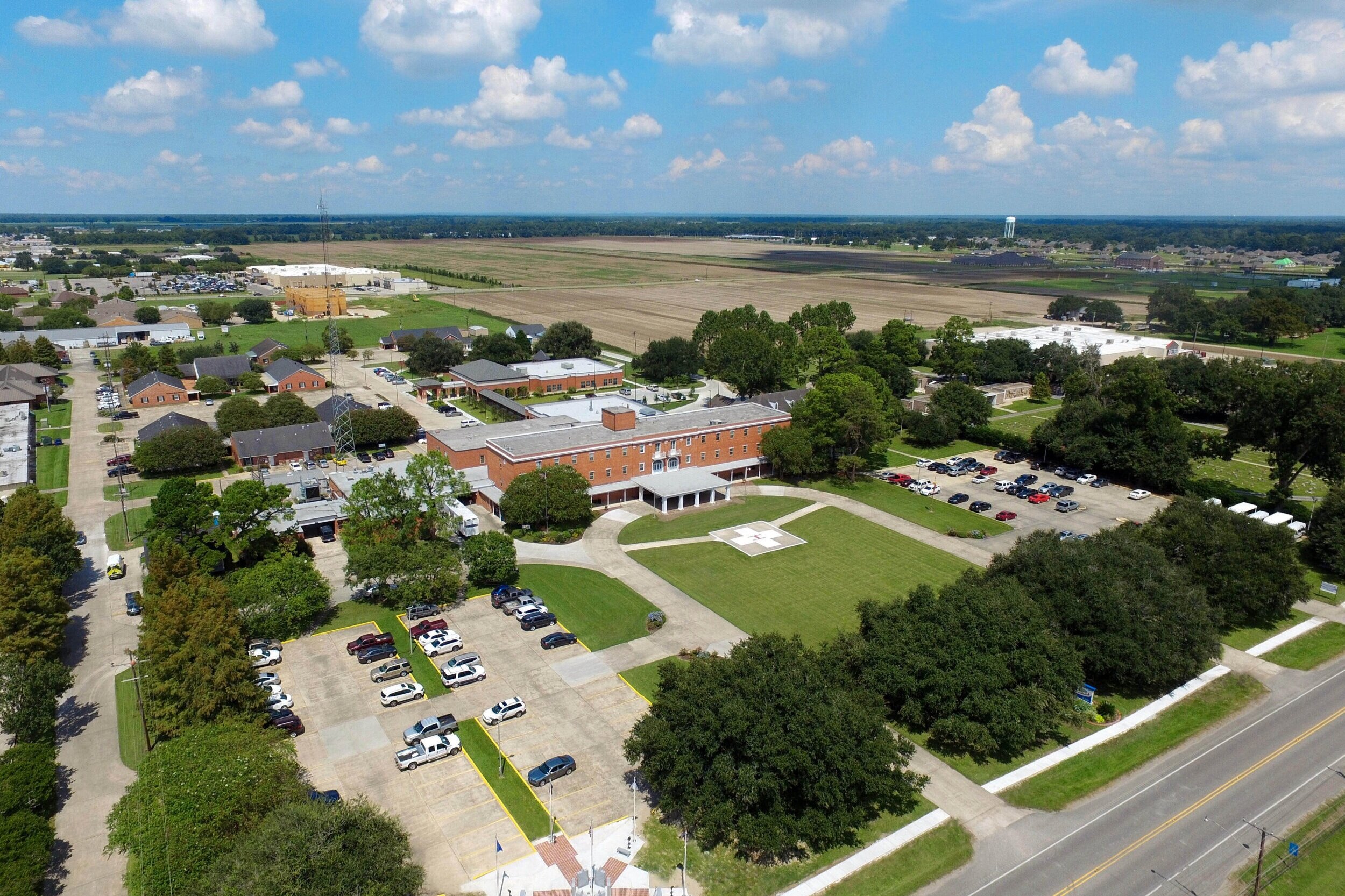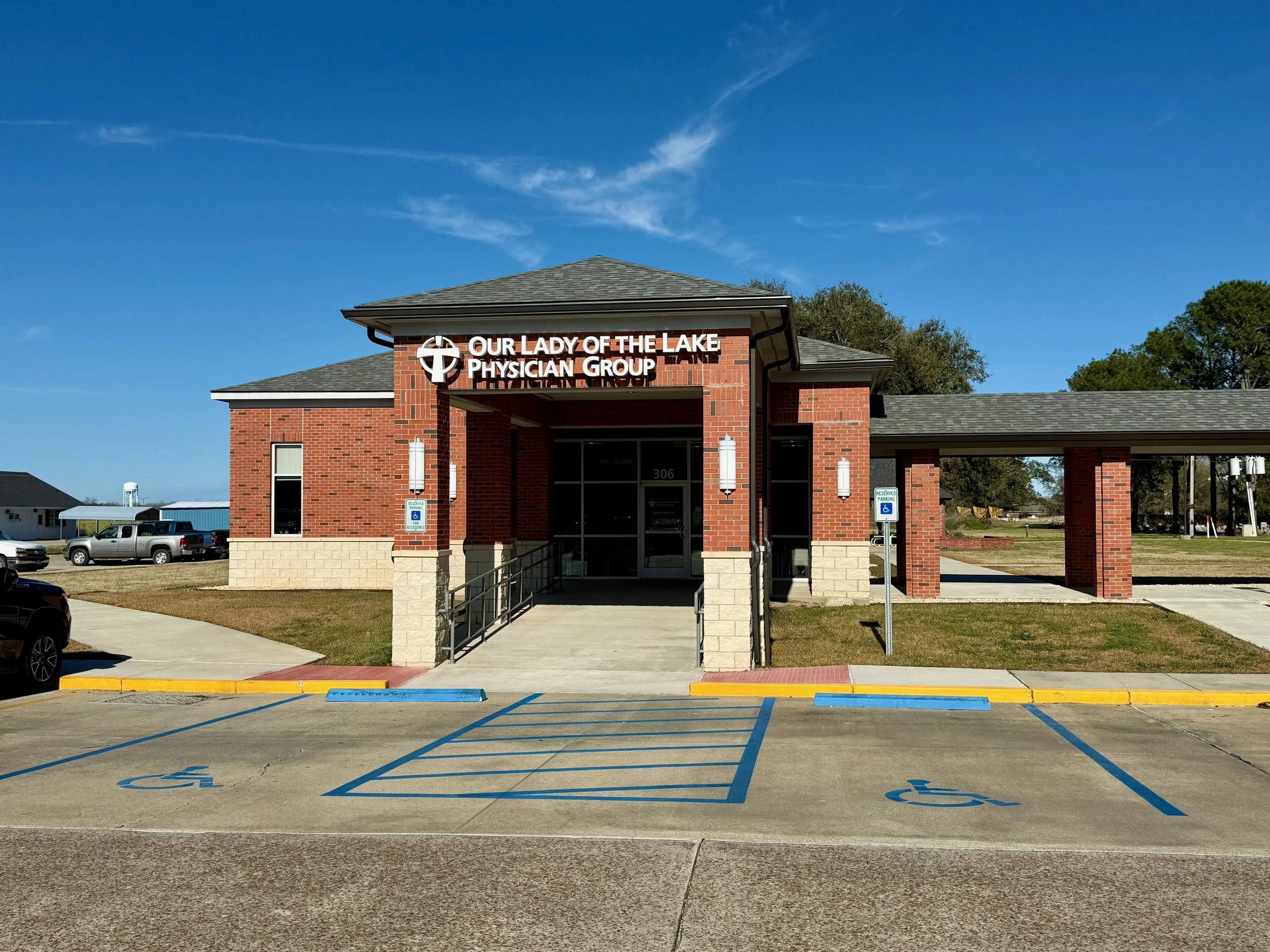About Us > Who We Are
Our Timeline
Early Foundations
1650
The Sisters of St. Joseph, a Catholic congregation of women, is founded in Le Puy-en-Velay, France.

A map of present-day Europe with Le Puy-en-Velay marked.
1698
Brothers and explorers, Pierre and Jean Baptiste Le Moyne set sail from Brest, France, and arrived at the lower Mississippi River. They encounter a prominent oxbow lake that will be named la Fausse Rivière or False River. Likewise, the surrounding area will become known as la Pointe Coupée or "the place of the cut-off".

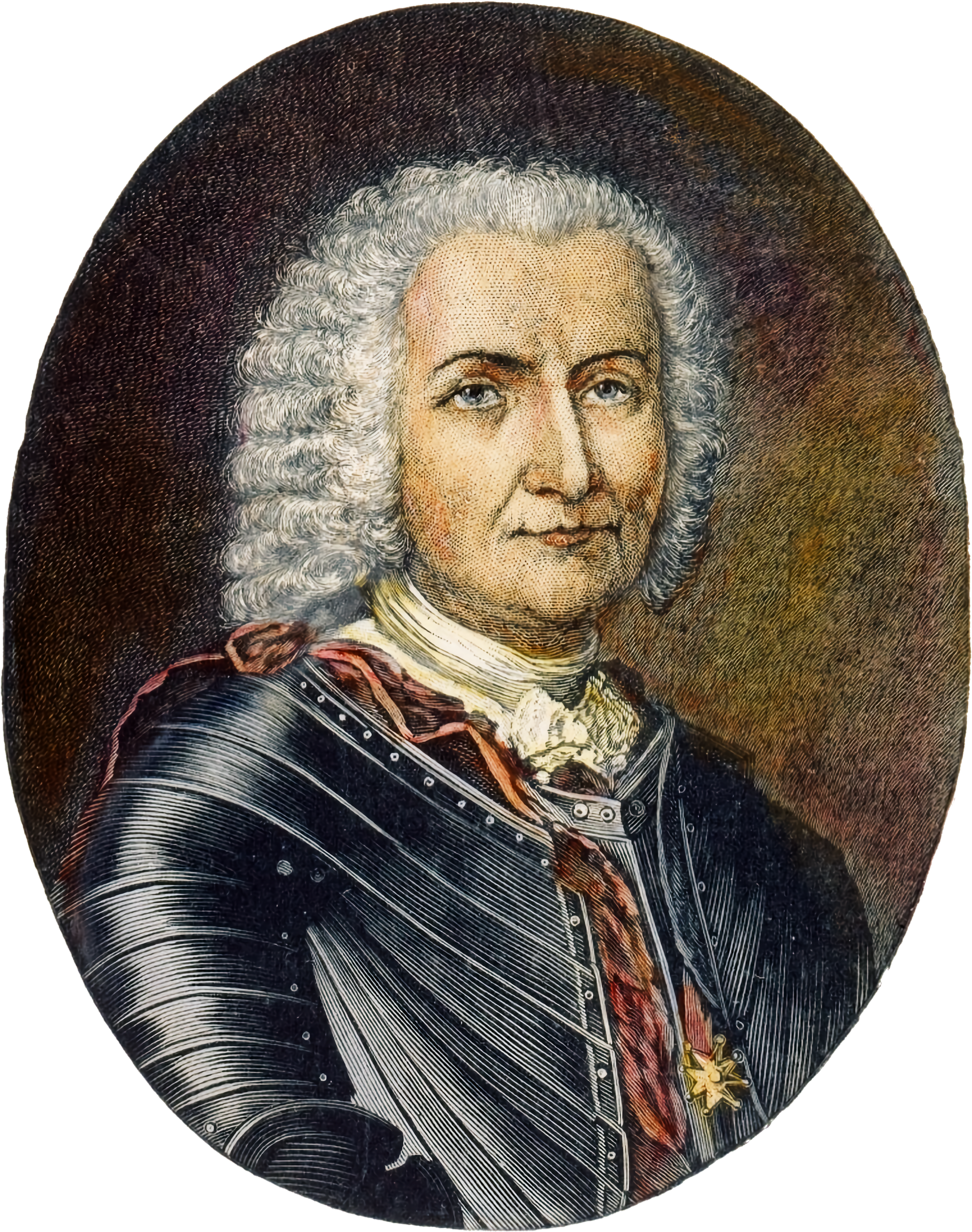
Pierre Le Moyne, left, and Jean Baptiste Le Moyne de Bienville, right.
Sources:
"Pierre Lemoyne, 1661-1706." Fine Art America, Granger Historical Picture Archive, 30 June 2012.
"Sieur De Bienville." Fine Art America, Granger Historical Picture Archive, 2 July 2012.
1720
The trading post le Poste de Pointe Coupée or "the Pointe Coupée Post" is established by French settlers and Creoles.

A map of present-day New Roads which shows the approximate location of le Poste de Pointe Coupée.
Source: Sturgell, Cathy Lemoine. "Site of 'Le Poste de Pointe Coupée' and 'L'Église St-François d'Assise.'" Le Poste de La Pointe Coupée & l'église St-François D'ASSISE, Louisiana Lineage.
1738
The St. Francis of Pointe Coupée church is dedicated. It is a predecessor to today's St. Mary Church.

An image of the first St. Francis of Pointe Coupée church which was later destroyed by a strong storm. The second St. Francis Church stood until being dismantled in 1892 when its foundation began to sink into the always-shifting Mississippi River (just northwest of the New Roads-Bayou Sara ferry crossing).
The handwriting on the bottom of the image reads:
Grand Services of the [illegible], New Roads, Louisiana
St. Francis of Assisi of Pointe Coupée Parish
built in 1719
Source: Costello, Brian J. "Historical Timeline of St. Mary of False River — St. Francis of Pointe Coupee." Facebook, Pointe Coupee Parish Library II, 3 May 2023. Image has been lightly edited and colorized for clarity.
1776
A chemin neuf or "new road" is constructed — cutting through thick, swampy land — linking the fort of Pointe Coupée (former parish seat) on the Mississippi River with the newer residential area on False River.

A map of present-day New Roads which shows the approximate route of the chemin neuf or "new road". Today, these roads are known as Ferry Road and New Roads Street.
Source: Agator, Jean-Marc, and Jean-Pierre Bernier. "At Pointe Coupée, the Dead Arm Is Alive and Well (New Roads)." La Grande Louisiane Française, 17 March 2019.
1803
The Louisiana Purchase is finalized which sees the United States buy territory from France for fifteen million dollars.
1805
The Pointe Coupée Parish Police Jury and Dr. Louis Charles Étienne Gougis exchange land — the parish give him the old Chemin Neuf on the western edge of his tract (today, this road is known as St. Mary's Street), and in return he gives the public a new strip on the eastern edge that becomes the "new" New Road.
1822
After Dr. Gougis' death, a portion of his property is transferred to Marie Catherine Depau, a free woman of color. She divides her plantation on False River into a six-block subdivision containing 20 lots which is connected to the old Chemin Neuf (St. Mary's Street today).
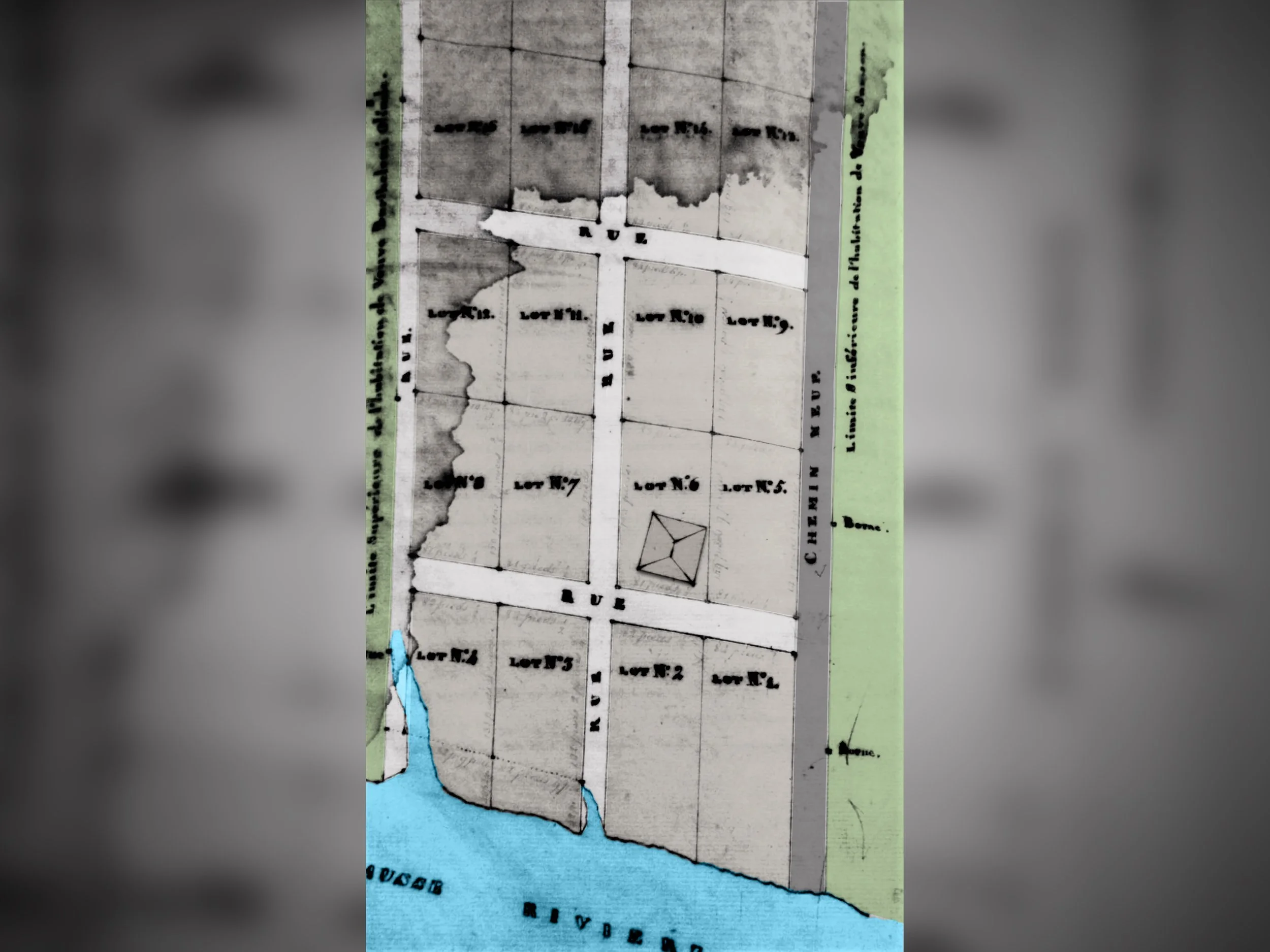
A survey plat prepared by Pierre L’Hermite for Marie Catherine Depau, recorded in the Pointe Coupée Parish Conveyance Book, 1822.
At the bottom (truncated), is la Fausse Rivière or False River. The old Chemin Neuf (St. Mary's Street today) can be seen on the right of the image. West of this road is a square structure drawn on lot № 6 which is the approximate location of present-day St. Mary of False River church.
Source: Costello, Brian J. "Marie Catherine Depau dite la Fille Gougis: Foundress of the City of New Roads still officially unrecognized." Facebook, Pointe Coupee Parish Library II, 10 February 2025. Image has been lightly edited and colorized for clarity.
1875
The Louisiana state legislature incorporates the growing town, officially naming it New Roads.
Similarly, in the years following Louisiana's 1812 statehood, the spelling of the word "Coupee" more and more begins to eschew the traditional French accent aigu over the first letter “e”. This is in large part due to the Americanization and Anglicization of names over time.
1882
The Mississippi River's high waters place so much pressure on the man-made levees near le Poste de Pointe Coupée that it breaks through, creating the Scott crevasse. Nearly entering False River, the resulting floodwater rises four feet above Main Street in New Roads.

Following the devastating flood, contractor G. A. Meyer advertised for massive manpower – 200 laborers – to help rebuild the damaged levee.
Source: "Wanted. 200 MEN TO WORK ON THE LEvee [sic] at Scott's crevasse." Pointe Coupee Banner, 10 March 1883, p. 1.
1904
Invited by Father Francis La Roche, the Sisters of St. Joseph arrive in New Roads, Louisiana.
Joseph Richy — New Roads mayor, local businessman, and philanthropist — donates a plot of land to the Sisters who aim to build a school. Two years later, the St. Joseph's School (the predecessor to today's Catholic of Pointe Coupee School) will hold its inaugural semester with 47 pupils.
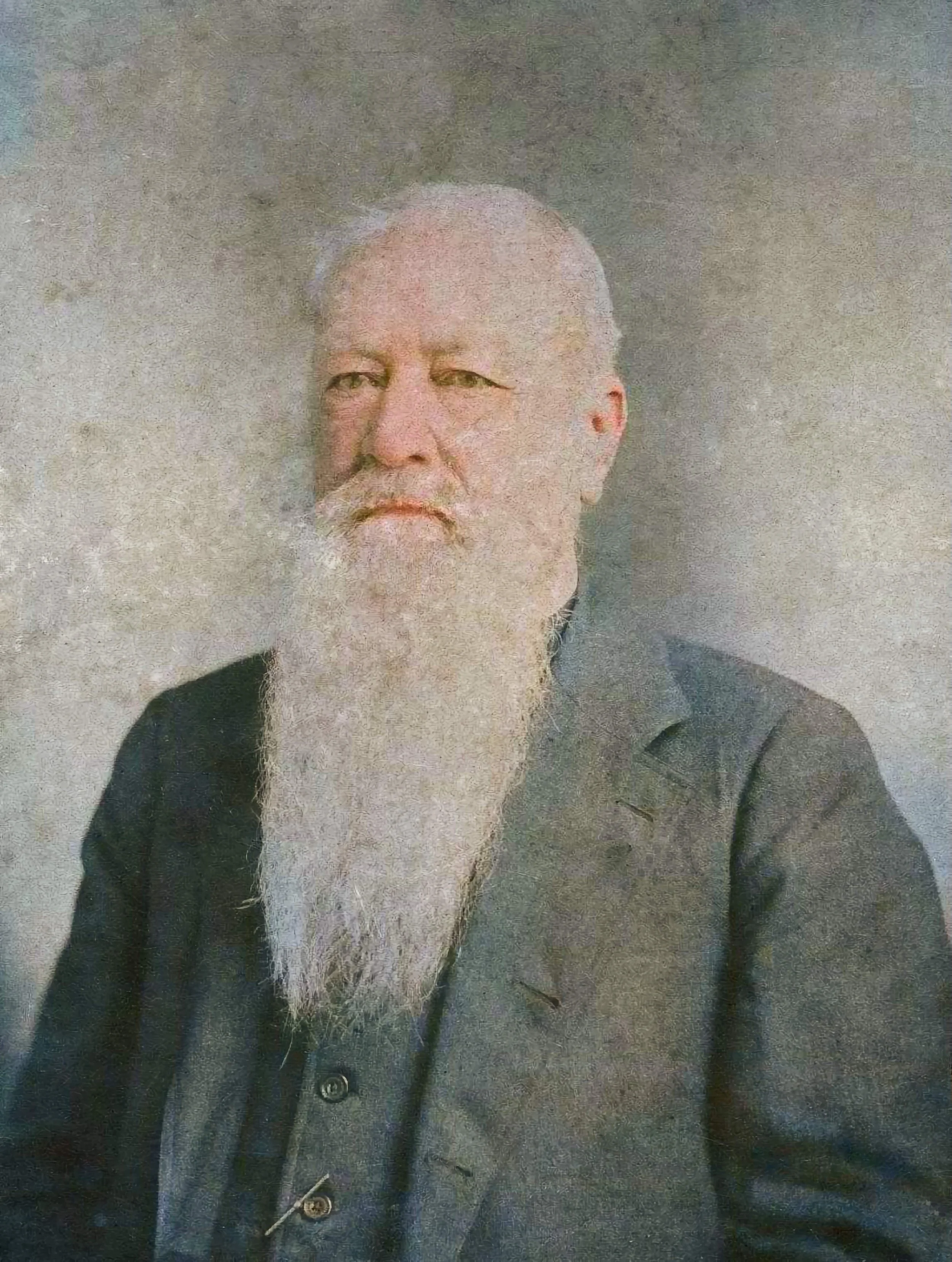
A portrait of Joseph Richy. He is most likely wearing a wool 3-piece suit, typical formal attire for the early 20th century, with the T-bar from his pocket watch's chain poking through his vest's button hole.
Source: "Joseph Richy." Facebook, Pointe Coupee Parish Library II, 6 September 2016. Image has been lightly edited and colorized for clarity.







